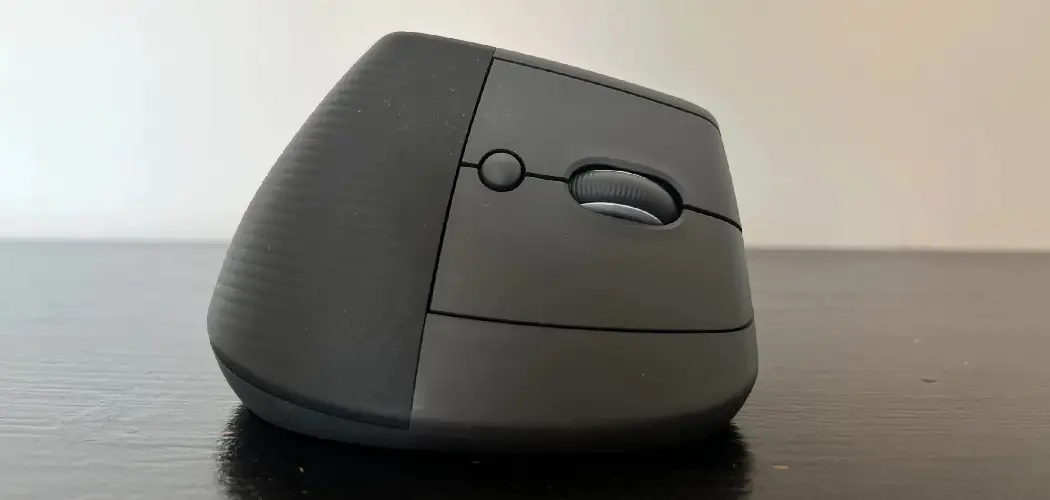Do you ever feel pain in your arm or hand after using a computer for an extended period of time? If so, you may want to try using a vertical mouse. A vertical mouse is designed to put your hand and arm in a more natural position, which can help reduce pain and fatigue. In this post, we’ll explain how to use a vertical mouse and show you some of the best options on the market. Let’s get started!
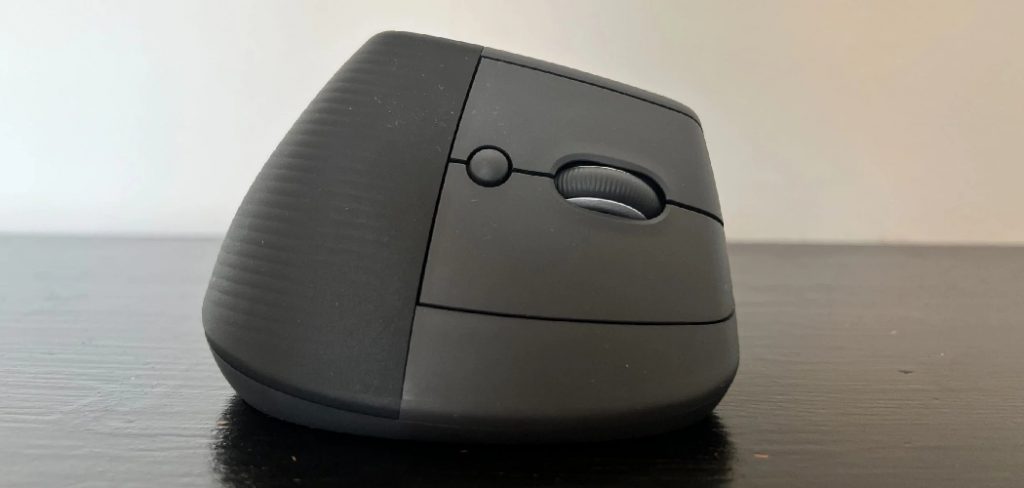
What Is a Vertical Mouse?
A vertical mouse is a device that is held in an upright position, as opposed to a traditional mouse, which is held flat against a surface. There are a few different designs of vertical mice, but they all share the common goal of providing a more ergonomic way to use a mouse. For example, some vertical mice have a bowed shape that fits the contours of your hand, while others have a more traditional design with buttons and a scroll wheel.
Many vertical mice also come with adjustable DPI settings, so you can customize the sensitivity to suit your needs. One of the main benefits of using a vertical mouse is that it reduces strain on your wrist and forearm. This can help to prevent issues like carpal tunnel syndrome, and it can also make using a mouse more comfortable in general. Therefore, whether you’re looking to boost your productivity or simply reduce discomfort, a vertical mouse is worth considering.
Why Should You Use a Vertical Mouse?
If you spend a lot of time at a computer, you may be familiar with the aches and pains that can come from using a traditional mouse. Carpal tunnel syndrome, shoulder pain, and wrist strain are just a few of the potential problems that can arise from the extended use of a standard mouse. A vertical mouse is ergonomically designed to address these issues by positioning the hand more naturally.

This can help to reduce stress on the joints and muscles, providing greater comfort and preventing injuries. In addition, many vertical mice include features such as programmable buttons and adjustable sensitivity, which can help to boost productivity and make working on the computer more efficient. For all these reasons, vertical mice are an ideal choice for anyone who spends a significant amount of time at their desk.
7 Steps to Follow on How to Use a Vertical Mouse
Step 1: Sit in a Good Posture
The first step to using a vertical mouse is sitting with a good posture. This means your back should be straight, your shoulders should be relaxed, and your wrists should be in line with your forearm. If you have poor posture, it can lead to pain and discomfort when using a vertical mouse.
Step 2: Place the Mouse in Front of You
The next step is to place the mouse in front of you. The mouse should be close to your keyboard so that you don’t have to reach for it. It’s also important to make sure the mouse is at a comfortable height.
Step 3: Grip the Mouse
The next step is to grip the mouse. There are two ways to do this: you can either use the palm grip or the claw grip. The palm grip is when you rest your hand on the back of the mouse. The claw grip is when you hold the mouse with your fingertips and fingers.
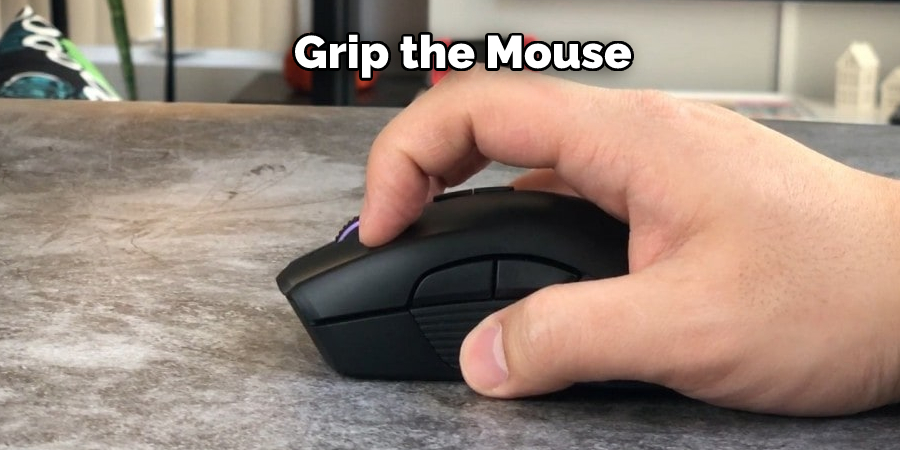
Step 4: Move the Mouse
The next step is to move the mouse. You will use your thumb, index finger, and middle finger to do this. Make sure you keep your hand relaxed as you move the mouse.
Step 5: Click the Mouse Buttons
The next step is to click the mouse buttons. There are two buttons on a vertical mouse: the left button and the right button. To click the left button, you will use your index finger. To click the right button, you will use your middle finger.
Step 6: Adjust the Settings
The next step is to adjust the settings. Most vertical mice have adjustable DPI settings. DPI stands for dots per inch. The higher the DPI, the faster the mouse will move. You can also adjust the sensitivity of the mouse buttons.
Step 7: Use the Mouse
The final step is to use the mouse. To do this, you will move the mouse around on your desk. You can use the mouse to click on icons, open files, and navigate around your computer. Make sure you keep your hand relaxed as you use the mouse.
That’s it! You’ve now learned how to use a vertical mouse. Remember to keep your posture good, place the mouse close to you, grip it correctly, and move it smoothly around your desk. If you follow these steps, you’ll be able to use a vertical mouse with ease.
How to Use a Vertical Mouse for Better Health
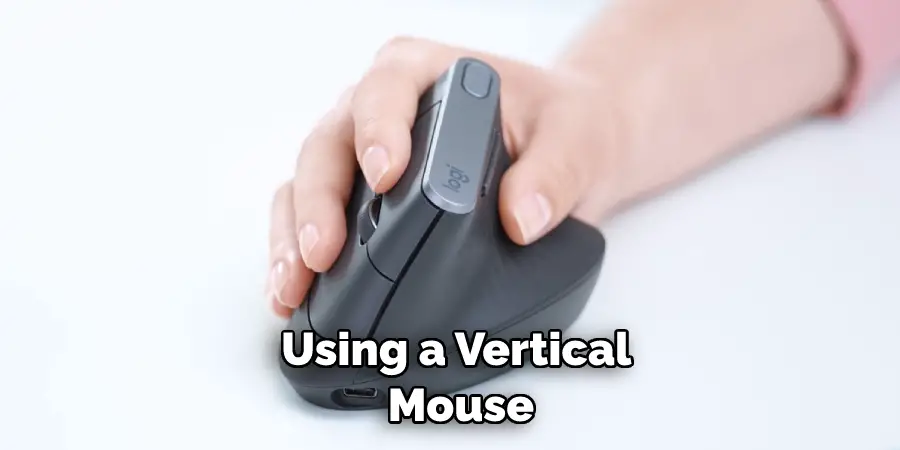
If you spend a lot of time at a computer, you may be familiar with the aches and pains that can come from using a traditional mouse. The good news is that there are alternatives available that can help to reduce the strain on your hand and wrist. A vertical mouse is one such option. By ergonomically positioning your hand in a more natural position, a vertical mouse can help to reduce the risk of repetitive strain injuries.
In addition, many vertical mice offer extra features that can further improve your comfort, such as adjustable dosage and thumb rests. So a vertical mouse is definitely worth considering if you’re looking for a way to improve your computing experience.
6 Benefits of Using a Vertical Mouse
There are many benefits to using a vertical mouse, especially if you spend a lot of time working on a computer.
- First, it helps to reduce wrist strain and pain. This is because you don’t have to twist your wrist to use the mouse, which can be hard on your joints.
- Second, it can help improve your posture. When you use a regular mouse, your shoulder tends to hunch forward. But with a vertical mouse, your shoulder stays in a more natural position, which can help reduce back and neck pain.
- Third, it can help you avoid “mouse hands.” This is the numbness and tingling you can get from using a regular mouse for too long.
- Fourth, it can increase your hand-eye coordination. This is because you have to move your whole arm to use a vertical mouse instead of just your wrist.
- Fifth, it can increase your productivity. This is because you can move the mouse faster with less effort.
- Finally, it’s just more comfortable to use! If you’ve never tried a vertical mouse, you’ll be surprised at how much more natural it feels.
How a Vertical Mouse Can Help with Carpal Tunnel Syndrome
Carpal tunnel syndrome is a common condition that is caused by compression of the median nerve in the wrist. Symptoms can include tingling, numbness, and pain in the hand and wrist. The condition is often caused by repetitive motion, such as typing on a keyboard or using a mouse. For people who are at risk of developing carpal tunnel syndrome, using a vertical mouse can help to reduce symptoms.
A vertical mouse keeps the hand in a more natural position, reducing wrist stress and lowering the risk of repetitive motion injuries. In addition, a vertical mouse can also help to improve hand and finger dexterity. As a result, it can be an effective tool for preventing carpal tunnel syndrome.
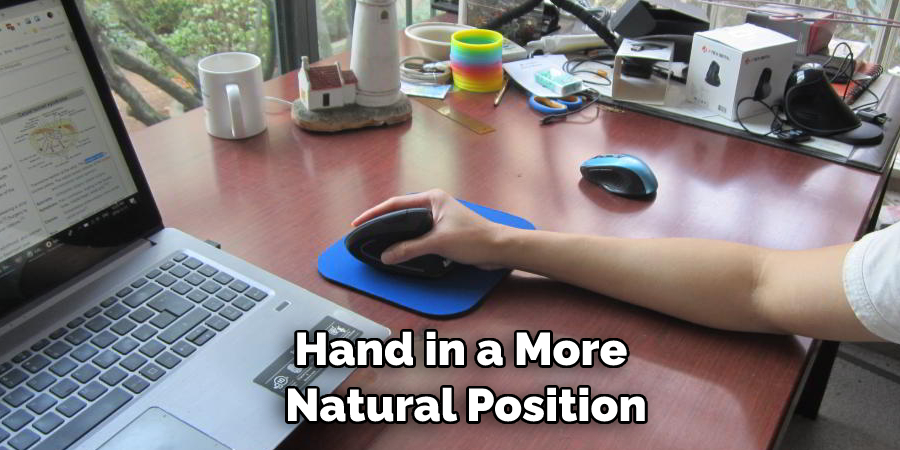
How to Use a Vertical Mouse for Better Ergonomics
How you hold your mouse can greatly impact your overall comfort while working at a computer. If you typically use a traditional mouse, you may notice that your wrist and forearm start to feel sore after extended use. This is because the position of your hand can put a strain on these muscles and tendons. To help alleviate this issue, many people have switched to using vertical mice.
A vertical mouse is designed to fit more comfortably in your hand, and the position of your thumb and pinky finger is more aligned with the position of your arm. This can help to reduce strain on the muscles and tendons in your forearm and wrist.
Additionally, using a vertical mouse can help to improve your posture by keeping your arm in a more neutral position. If you are looking for a more ergonomic way to use your computer, consider switching to a vertical mouse.
Are There Any Disadvantages to Using a Vertical Mouse?
Vertical mice have become increasingly popular recently as more people look for ergonomic ways to reduce wrist strain. However, there are a few potential downsides to using a vertical mouse. For one thing, they can be more expensive than traditional mice and may not work with all types of computer setups.
Additionally, getting used to the new orientation can take some time, and some users find that their hands feel cramped after extended use. Overall, vertical mice offer several benefits that outweigh the potential drawbacks. For people who spend long hours at the computer, a vertical mouse can help to reduce fatigue and prevent carpal tunnel syndrome.
Conclusion
So there you have it! A vertical mouse is a great way to improve comfort and reduce strain on your hands and wrists. So give it a try next time you’re working at your computer. You may be surprised at how much difference it can make.

